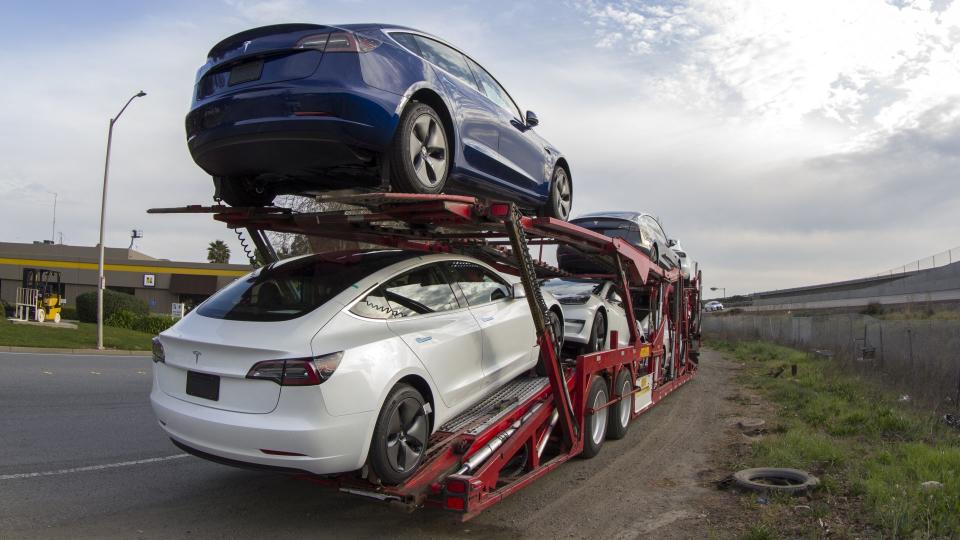
“Range anxiety” is real among electric vehicle drivers and even more common among those considering purchasing an EV for the first time. Range anxiety is the fear that you’ll run out of battery power before you reach home or a compatible, available EV charging station.
I’m a Mechanic: Here Are 8 Cars I Would Buy and Why They Are Worth It
More: 3 Things You Must Do When Your Savings Reach $50,000
Legacy car manufacturer Volvo found that 58% of drivers cited running out of power before they reach a charging destination as the number one barrier to purchasing an EV. Forty-nine percent cited the “low availability of charging stations” as their top barrier to EV adoption, reported TheDrive.com in an article about the Volvo study.
However, these fears tend to subside once drivers get behind the wheel of an EV. Only 38% of EV drivers surveyed said they worry about running out of power, TheDrive.com reported. In the same study, “65% [of EV drivers] say they had range anxiety when they first purchased an EV, but it went away after a few months,” Blinkcharging.com reported.
With President Joe Biden’s vow to create a convenient, reliable national network of 500,000 EV chargers by 2030, range anxiety may vanish completely within this decade. To support Biden’s initiative, the Department of Transportation has allocated $5 billion to the National Electric Vehicle Infrastructure program, which aims to add chargers to major highways, supporting drivers on long-distance trips.
Fortunately, many states already have adequate charging capabilities for their population. Not surprisingly, as it has been at the forefront of EV legislation, California has the most EV charging stations, with a total of 13,664. That amounts to one charging station per 12 square miles.
Massachusetts drivers will find EV charging stations at a rate of one every five square miles. Rhode Island, one of the smaller states, has the densest frequency of EV charging stations, with just 272 charging stations, giving drivers one charging station for every four miles of land.
In general, northeastern states have a high frequency of charging stations per square mile, based on data compiled from the U.S. Department of Energy’s Alternate Fuels Data Center and analyzed by ElectricDriver.co and GOBankingRates. This charging station frequency extends down to Delaware and Maryland, where the number of square miles between charging stations, on average, tapers off.
Should You Buy An EV If You Live in the South?
But that doesn’t mean you should hesitate to buy an EV if you live in the South. As you can see from the chart below, most southern states have a charging station frequency of 218 square miles or less. According to statistics from GridServe.com, the average EV car range is 219 miles in 2023.
|
Total EV Charging Stations |
Charging Station Frequency (Square Miles) |
|
|
Maryland |
1,183 |
10 |
|
Delaware |
142 |
14 |
|
Florida |
2,590 |
25 |
|
Virginia |
1,058 |
40 |
|
Georgia |
1,466 |
41 |
|
North Carolina |
1,017 |
53 |
|
Tennessee |
586 |
72 |
|
South Carolina |
354 |
90 |
|
Texas |
2,263 |
119 |
|
Kentucky |
227 |
178 |
|
Alabama |
240 |
218 |
|
West Virginia |
109 |
222 |
|
Oklahoma |
306 |
228 |
|
Arkansas |
188 |
283 |
|
Louisiana |
162 |
321 |
|
Mississippi |
93 |
521 |
Out of the 16 states in the southern U.S., only one (Mississippi) has a charging station frequency that won’t accommodate the maximum range of an EV, which is recognized as 516 miles by CarandDriver.com. That’s not to say you can’t find chargers; there are 93 across the state.
You’ll want to plan ahead to ensure one is available when needed. Even so, Mississippi is only 190 miles across at its widest point, so you can easily make it across the state on a single charge.
It’s important to understand that the frequency of EV chargers based on how many stations you’ll find in a set number of square miles doesn’t mean these EV charging stations are equally placed amongst a state. But it’s a fair guideline to minimize range anxiety on long-distance trips.
For instance, if you can find one EV charging station for every 40 miles you drive in Virginia, on average, you should easily cross the state (several times) and find a charger whenever you need one.
Range anxiety seems less scary when you look at the numbers and understand that most charging stations will be on main highways, making them easy for long-distance drivers to access.
One Solution Where EV Chargers Are Sparse: Charge at Home
Even if you’re in a state like Oklahoma, Arkansas, Louisiana, or Mississippi, where charging stations are not as plentiful based on the size of the state, you shouldn’t let it keep you from buying an EV. A study from J.D. Power found that 88% of EV owners said they “often” or “always” charge their EVs at home.
By topping off in the evenings, you can avoid range anxiety. On long-distance trips, you may wish to map out your route in advance and plan meals where you can find Level 1 fast chargers to boost your battery. Book hotels with EV chargers to top off your vehicle for multi-day trips, just as you might at home.
More From GOBankingRates
This article originally appeared on GOBankingRates.com: Is It Worth Getting an Electric Car If You Live in These Southern States?
"electric" - Google News
December 09, 2023 at 08:00PM
https://ift.tt/REJ9XsI
Is It Worth Getting an Electric Car If You Live in These Southern States? - Yahoo Finance
"electric" - Google News
https://ift.tt/yKpeDZ3
https://ift.tt/DfN95VB
Bagikan Berita Ini















0 Response to "Is It Worth Getting an Electric Car If You Live in These Southern States? - Yahoo Finance"
Post a Comment